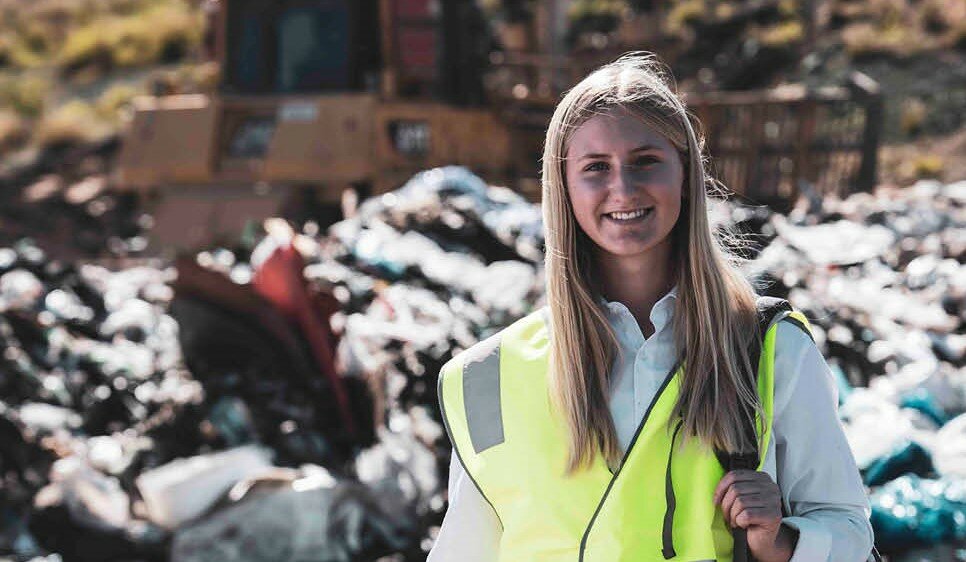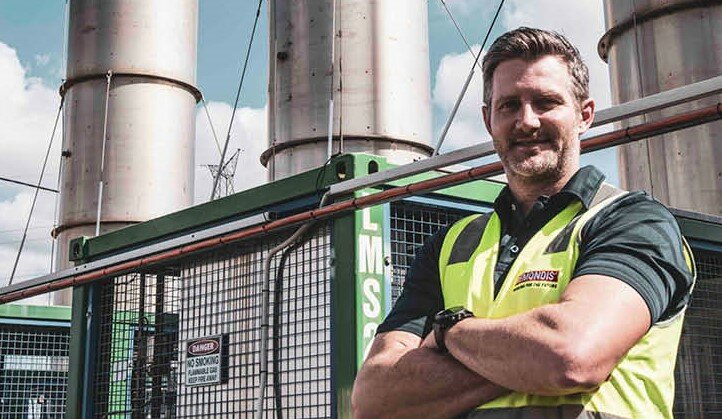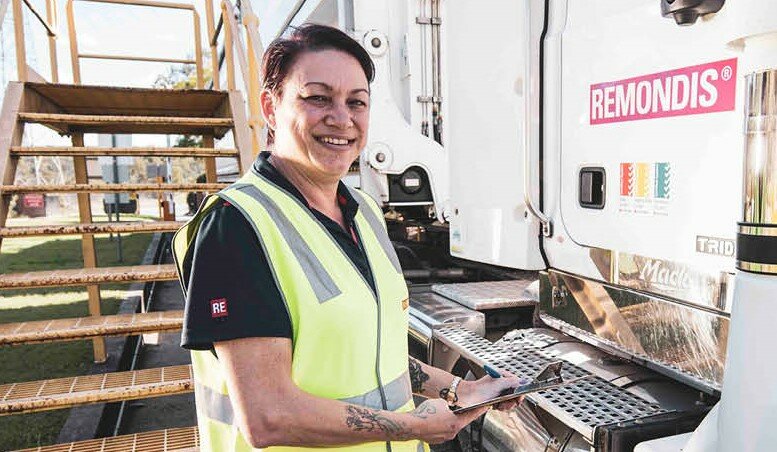Environmental Treatment Solutions (ETS), a member of the REMONDIS Group, provides chemical and hazardous waste disposal services from licensed facilities in Minto, Blayney and Rutherford
Search
Locations REMONDIS Australia
The whole picture - with just a single click. Find out here where our branches are located, what services they offer and how to contact them.
Locations REMONDIS Group
Discover the world of REMONDIS with its + branches and associated companies in more than countries across Europe, Africa, Asia and Australia.
- english
- english
- nederlands
- français
- español
- italiano
Waste Streams
Organic solvents
REMONDIS are experts in the collection, transport, disposal or recycling of organic solvents
Get a quote
Why choose REMONDIS for your organic solvent disposal?
Certified and compliant
Our organic solvent waste management services are fully trackable and ISO-certified to local waste and water authority standards, preventing hefty fines for mismanagement
Flexible scheduling
Choose a service frequency according to your needs, whether it be on a regular schedule or on-demand
Prevention
Prevent spills, blockages and the high costs associated with unscheduled emergency servicing
Large, diverse fleet
Our dedicated liquid waste transport fleet includes a range of vehicles to suit any sized liquid waste collection, even in hard-to-access spaces
Our organic solvents services
REMONDIS Australia is licenced to transport and receive various organic solvents and solvent residues for the purpose of accumulation, treatment, and processing in all major cities of Australia. Our services include:
- Chemical physical analysis
- EPA licenced transport and receiving facilities
- Waste tracking and transport in line with the ADG requirements.
- Accumulation, treatment and processing
- Development of the recycling processes for particularly valuable materials in cooperation with the customer

What are organic solvents?
The terms organic solvents and solvent residues cover a large number of different groups of substances.
These materials are generated from a wide variety of industrial manufacturing, mining and related industries.
Organic solvents are classified as ‘hazardous’ or ‘regulated’ waste depending on the risk the material may have on the community or the environment when handled improperly during either transport or disposal.
The transport and disposal of hazardous liquid waste is regulated by state environmental authorities and must be tracked from collection and transport through to disposal at licensed facilities using compliant chain of responsibility procedures. Under these laws, it is a business’ responsibility to ensure their hazardous liquid waste is being transported and disposed of by certified professionals to licensed facilities following these procedures.
Managing organic solvents in Victoria
In Victoria organic solvents and solvent residues waste tracking and transport is regulated under the Australian Code for the Transport of Dangerous Goods by Road & Rail (ADG).
Waste transaction tracking requires up to four contaminants to be identified, where applicable, listing contaminants in order of potential hazard.
See below list of ADG Codes:

| Polychlorinated biphenyl and related compounds | 1 |
| Halogenated hydrocarbons NOS | 2 |
| Mercury and mercuric compounds | 3 |
| Chromium and chromium compounds | 4 |
| Arsenic and arsenic compounds | 5 |
| Cadmium and cadmium compounds | 6 |
| Boron compounds | 7 |
| Inorganic cyanides | 8 |
| Mercaptans, methacrylates and sulfides | 9 |
| Lead compounds | 10 |
| Copper compounds | 11 |
| Zinc compounds | 12 |
| Nickel compounds | 13 |
| Silver compounds | 14 |
| Vanadium compounds | 15 |
| Cobalt compounds | 16 |
| Fluoride compounds NOS | 17 |
| Acidic solutions | 18 |
| Basic solutions | 19 |
| Asbestos | 20 |
| Peroxides | 21 |
| Perchlorates | 22 |
| Isocyanates and thiocyanates | 23 |
| Phenols | 24 |
| Organic solvents, excluding halogenated solvents | 25 |
| Aromatic compounds NOS | 26 |
| Beryllium and beryllium compounds | 27 |
| Selenium and selenium compounds | 28 |
| Tin compounds | 29 |
| Antimony and antimony compounds | 30 |
| Tellurium and tellurium compounds | 31 |
| Barium and barium compounds | 32 |
| Thallium and thallium compounds | 33 |
| Inorganic sulfides | 34 |
| Inorganic fluoride compounds | 35 |
| Organic cyanides | 36 |
| Alkaline or alkaline earth metals | 37 |
| Inorganic phosphorus compounds | 38 |
| Metal carbonyls | 39 |
| Chlorates | 40 |
| Azides | 41 |
| Pharmaceutical or veterinary compounds | 42 |
| Biocides and phytopharmaceutical substances NOS | 43 |
| Creosotes | 44 |
| Organic phosphorus compounds | 45 |
| Ethers | 46 |
| Organic nitrogen compounds, especially aliphatic amines | 47 |
| Organic nitrogen compounds, especially aromatic amines | 48 |
| Explosives | 49 |
| Sulfur organic compounds NOS | 50 |
| Any congenor of polychlorinated dibenzo-furan | 51 |
| Any congenor of polychlorinated dibenzo-p-dioxin | 52 |
| Hydrocarbons and its oxygen nitrogen or sulfur compounds NOS | 53 |
| Halogenated organic solvents NOS | 54 |
| Molybdenum and molybdenum compounds | 55 |
| Organochlorine pesticides | 56 |
| Phenoxyacetic acid herbicides (including 2,4-D) | 57 |
| Phthalates | 58 |
| Ethylene diamine tetra acetic acid (EDTA) | 59 |
| Nitrogen compounds, including nitrates and nitrites | 60 |
| Chloride | 61 |
| Iodide | 62 |
| Polybrominated compounds | 63 |
| Benzene | 64 |
| Benzo(a)pyrene | 65 |
| C6-C9 petroleum hydrocarbons | 66 |
| C10-C36 petroleum hydrocarbons | 67 |
| Carbon tetrachloride | 68 |
| Chlorobenzene | 69 |
| Chloroform | 70 |
| Chlorophenol | 71 |
| Cresol | 72 |
| Dichlorobenzene | 73 |
| Dichloromethane | 74 |
| Dichlorophenol | 75 |
| Dinitrotoluene | 76 |
| Ethylbenzene | 77 |
| Formaldehyde | 78 |
| Hexachlorobutadiene | 79 |
| Methyl ethyl ketone | 80 |
| Nitrobenzene | 81 |
| PAH NOS | 82 |
| Styrene | 83 |
| Tetrachloroethane | 84 |
| Toluene | 85 |
| Trichlorobenzene | 86 |
| Trichloroethane | 87 |
| Trichlorophenol | 88 |
| Vinyl chloride | 89 |
| Xylenes | 90 |
Hazardous liquid waste producers must identify the waste’s industry of origin, by selecting from the following (abbreviated) list of ANZSIC (Australian and New Zealand Standard Industrial Classification) codes provided by the Australian Bureau of Statistics:
| Oil and gas extraction | 700 |
| Iron ore mining | 801 |
| Bauxite mining | 802 |
| Copper ore mining | 803 |
| Gold ore mining | 804 |
| Silver-lead-zinc ore mining | 807 |
| Other metal-ore mining | 809 |
| Petroleum refining and petroleum fuel manufacturing | 1701 |
| Other petroleum and coal product manufacturing | 1709 |
| Industrial gas manufacturing | 1811 |
| Basic inorganic chemical manufacturing | 1813 |
| Synthetic resin and synthetic rubber manufacturing | 1821 |
| Fertiliser manufacturing | 1831 |
| Human pharmaceutical and medicinal product manufacturing | 1841 |
| Veterinary pharmaceutical and medicinal product manufacturing | 1842 |
| Cleaning compound manufacturing | 1851 |
| Cosmetic and toiletry preparation manufacturing | 1852 |
| Photographic chemical product manufacturing | 1891 |
| Explosive manufacturing | 1892 |
| Other basic chemical product manufacturing, NOS | 1899 |
| Tyre manufacturing | 1914 |
| Adhesive manufacturing | 1915 |
| Paint and coatings manufacturing | 1916 |
| Iron smelting and steel manufacturing | 2110 |
| Iron and steel casting | 2121 |
| Steel pipe and tube manufacturing | 2122 |
| Alumina production | 2131 |
| Aluminium smelting | 2132 |
| Copper, silver, lead and zinc smelting and refining | 2133 |
| Other basic non-ferrous metal manufacturing | 2139 |
| Non-ferrous metal casting | 2141 |
| Aluminium rolling, drawing, extruding | 2142 |
| Other basic non-ferrous metal product manufacturing | 2149 |
| Iron and steel forging | 2210 |
| Structural steel fabricating | 2221 |
| Architectural aluminium product manufacturing | 2223 |
| Metal roof and guttering manufacturing (except aluminium) | 2224 |
| Sheet metal product manufacturing (except metal structural and container products) | 2240 |
| Spring and wire product manufacturing | 2291 |
| Nut, bolt, screw and rivet manufacturing | 2292 |
| Metal coating and finishing | 2293 |
| Other fabricated metal product manufacturing NOS | 2299 |
| Motor vehicle manufacturing | 2311 |
| Motor vehicle body and trailer manufacturing | 2312 |
| Automotive electrical component manufacturing | 2313 |
| Shipbuilding and repair services | 2391 |
| Photographic, optical and ophthalmic equipment manufacturing | 2411 |
| Computer and electronic office equipment manufacturing | 2421 |
| Electric cable and wire manufacturing | 2431 |
| Solid waste collection services | 2911 |
| Other waste collection services | 2919 |
| Other heavy and civil engineering construction | 3109 |
| Port and water transport terminal operation | 5212 |
| Airport operation and other air transport support services | 5220 |
| Central government administration | 7510 |
| State government administration | 7520 |
| Local government administration | 7530 |
| Defence | 7600 |
| Fire protection and other emergency services | 7713 |
| Secondary education | 8022 |
| Higher education | 8102 |
| Dental services | 8531 |
| Automotive body, paint and interior repair | 9412 |
| Other automotive repair and maintenance | 9419 |
| Domestic appliance repair and maintenance | 9421 |
| Photographic film processing | 9532 |
Who uses our organic solvents services?
Mining // Automotive // Service stations // Manufacturing // Agriculture // Construction // Laboratories // Cleaners
Recycling organic solvents
Solvent waste can be recycled into a variety of grades of reusable solvent and gun washes. The recycled solvent can also be used to provide alternative fuel sources to manufacturers such as the cement industry
The redistilled solvent can be used as an alternative fuel for cement kilns. This can be done through a solvent distillation process, in which the solvents are treated with heat to break the solvent down into its component parts. Distillation can also produce saleable grade solvent which then re-joins the circular economy as a recovered resource for reuse.
REMONDIS aims to work to recover and reuse organic solvent and solvent residues through our fully EPA licensed service, ensuring minimal impact on the environment.
What happens to your organic solvents?
We’ll discuss recycling or disposal options with you, based on the volume, location, storage and type of material to be managed.
After your hazardous liquids are safely collected and transported, they are taken to one of our licensed liquid processing facilities. Where possible, we will always recover resources using our network of licensed processing facilities, before responsibly disposing of materials that cannot be recovered.












